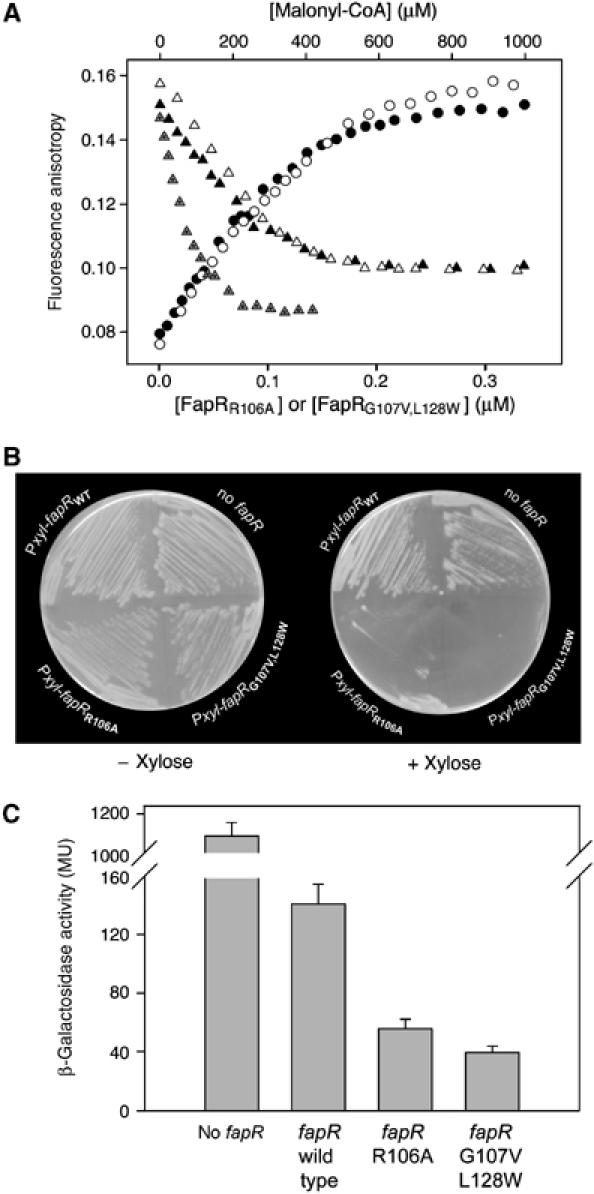Figure 9.

Mutations in the FapR malonyl-CoA binding pocket are deleterious for cell growth. (A) Fluorescence anisotropy changes upon addition of FapRR106A to 9.5 nM 34 bp F-dsDNA (black circles); on addition of FapRG107V,L128W to 9.5 nM 34 bp F-dsDNA (white circles); on addition of malonyl-CoA to the previously formed F-dsDNA/FapRWT complex (gray triangles); on addition of malonyl-CoA to the previously formed F-dsDNA/FapRR106A complex (black triangles); and on addition of malonyl-CoA to the previously formed F-dsDNA/FapRG107V,L128W complex (white triangles). (B) Plasmids were constructed in which fapRWT, fapRR106A or fapRG107V,L128W were under the control of a xylose-inducible promoter (Pxyl) and introduced into a strain, GS364, that was a mutant for fapR and contained a PfabHA-lacZ fusion. The strains were grown on LB solid medium in the absence and in the presence of xylose (1%) (C) β-galactosidase activities from PfabHA-lacZ in strain GS364 expressing fapRWT,fapRR106A or fapRG107V,L128W. To induce expression of the fapR alleles, the different strains previously grown on LB agar solid medium, were resuspended in LB medium supplemented with xylose 1% to an OD525 of 0.1. After two hours of growth at 37°C, samples were collected and β-galactosidase activities determined.
